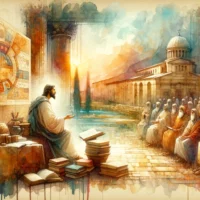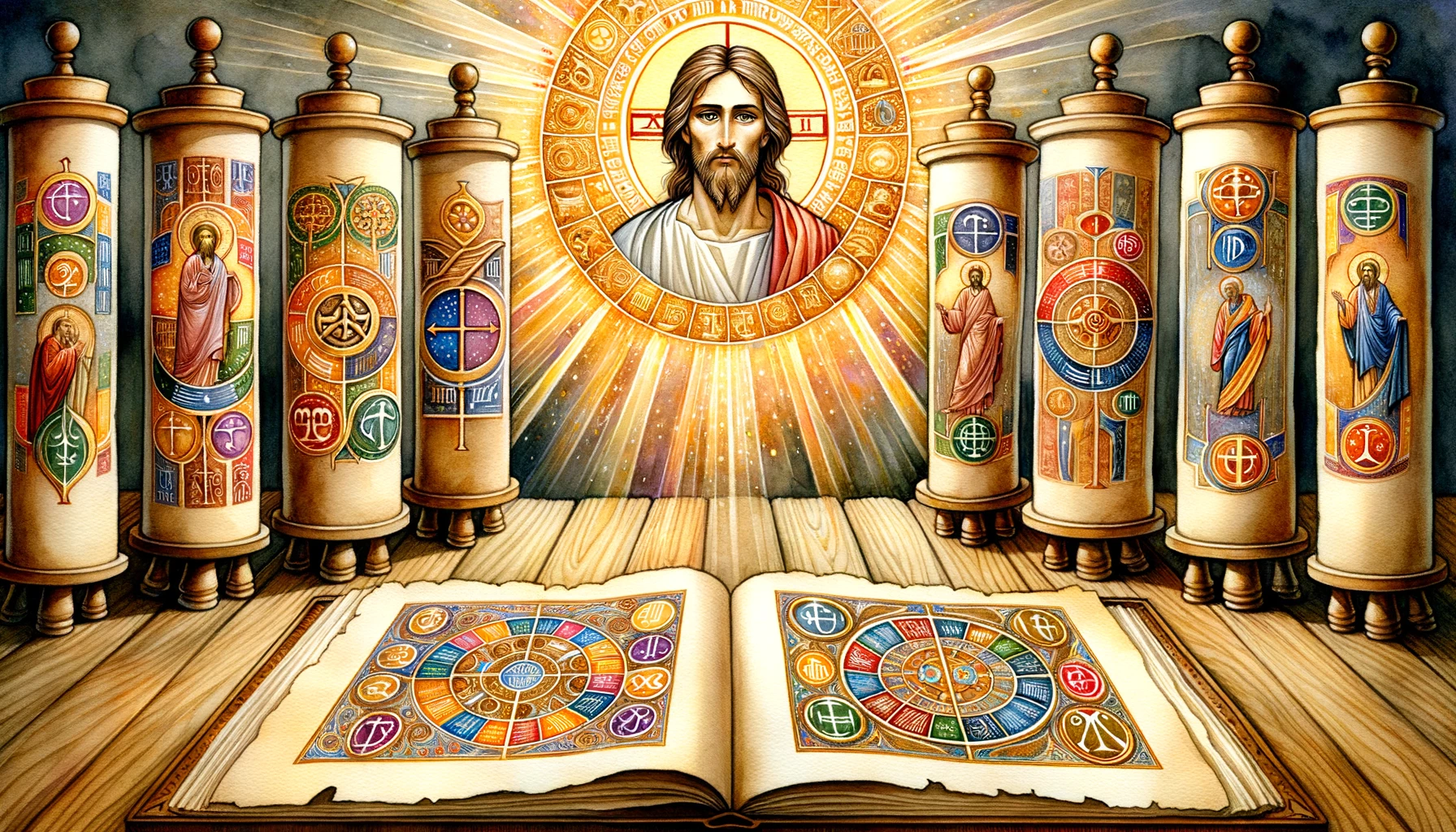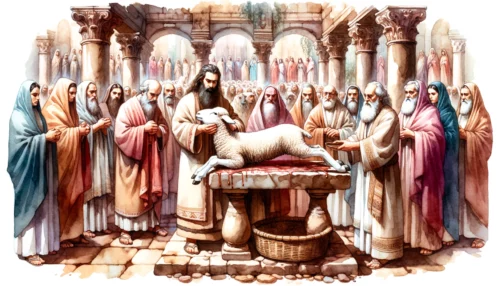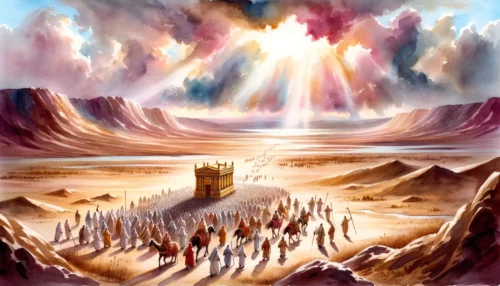The question, “What is the significance of the Bible containing four unique Gospels?” may have surfaced in your heart and mind at some point. It seems an unusual choice, considering the repetition among the narratives. Yet, each Gospel – Matthew, Mark, Luke, and John – carries its distinct emphasis, providing us with a well-rounded understanding of Jesus Christ’s life, ministry, and divine mission. The purpose and uniqueness of each Gospel reveals the beautiful tapestry woven together by their collective recounting of Jesus Christ’s earthly journey.
The Uniqueness of Each Gospel
The four Gospels are not random variations of the same story. They offer distinct perspectives, emphasizing unique aspects of Jesus’s life and teachings. Allowing us to view Jesus’s life and teachings from different angles, they enrich our understanding of Him.
Matthew’s Gospel is primarily for the Jewish audience, placing emphasis on Jesus as the promised Messiah. Known for its structured style, Matthew aligns the story of Jesus with the Old Testament prophecies, drawing parallels that the Jewish readers would understand. Often it’s stated, “this happened so that the word of the Lord spoken through the prophet would be fulfilled” (Matthew throughout), underscoring the Messiah they had been waiting for was indeed Jesus.
Mark’s Gospel, the briefest of the four, is energetic and immediate, demonstrating Jesus as a man of action, the Servant of God. Mark hardly ever lingers on the details of Jesus’s teachings or discourses. Instead, he propels us from one miraculous act to the next, emphasizing the power and authority of Jesus (Mark throughout). The Gospel of Mark was likely written for a Roman audience, familiar with servitude and appreciating the strength and decisiveness of a leader.
Luke, the physician, wrote his Gospel with a gentler touch, showing Jesus as the Son of Man who came for all people. His account emphasizes Jesus’s compassion and care for the poor, the outcast, the sick, and the sinner (Luke throughout). It is also the only Gospel to contain certain parables, such as the Good Samaritan and the Prodigal Son, that highlight mercy and grace. Written primarily for a Gentile audience, Luke’s Gospel portrays Jesus as the perfect man, relatable and compassionate.
John’s Gospel is distinct from the other three, known as the synoptic Gospels because of their similar viewpoints. John offers a more spiritual view of Jesus, focusing on His divine nature as the Son of God. From its opening words, “In the beginning was the Word, and the Word was with God, and the Word was God” (John 1:1), to its revealing dialogues and discourses, John’s Gospel guides us towards a profound understanding of Jesus’s divine identity.
Matthew’s Gospel presents Jesus as the Messiah for Jewish readers by aligning His story with Old Testament prophecies. Mark’s Gospel, likely written for Romans, demonstrates Jesus as a man of action, the Servant of God, emphasizing His authority. Luke, writing primarily for a Gentile audience, shows Jesus’s compassion and care for all people, portraying Him as the perfect man. John’s Gospel, distinct from the synoptic Gospels, offers a profound understanding of Jesus’s divine identity as the Son of God. Each Gospel thus provides a unique perspective on Jesus, enriching our understanding of His life and teachings.
Understanding the Audience and Purpose of the Gospels
Every Gospel was written with a specific audience in mind, each with its unique cultural context and spiritual needs. Understanding the intended audience and the purpose behind each Gospel allows us to see why they were composed in their distinctive ways.
Matthew, a tax collector turned disciple, wrote to a Jewish audience. Familiar with Jewish customs, history, and prophecies, his readers needed to see Jesus as the prophesied King, the Messiah. Matthew built his case meticulously, presenting Jesus as a royal figure, fulfilling the promises made to Abraham and David. Matthew highlighted Jesus’s genealogy (Matthew 1), His birth in Bethlehem (Matthew 2), and His authoritative teaching (Matthew 5-7) to demonstrate His royal lineage and messianic role.
Mark, a companion of Peter, wrote his Gospel for a Roman audience. Romans admired action, power, and decisiveness. Mark portrayed Jesus as a tireless servant of God and humanity, performing miraculous acts and showcasing His divine authority. Mark presents a continuous stream of actions – calming the storm, healing the sick, feeding thousands – highlighting Jesus’s power and the immediacy of His ministry (Mark throughout).
Luke, a physician and companion of Paul, wrote to Gentiles who may not have been familiar with Jewish traditions and prophecies. Therefore, his account is rich in detailed narratives, presenting Jesus as a compassionate Savior who welcomed all, including the poor, the sinners, the outcasts. Luke also stressed Jesus’s role as the perfect man, one who fulfills the moral ideals that Gentiles held (Luke throughout). His Gospel also contains more parables than any other, such as the Good Samaritan and the Prodigal Son, offering ethical and spiritual lessons.
John, one of the original twelve disciples, had a different purpose. He wrote not for a specific cultural group, but for all who seek to understand who Jesus is. His Gospel unveils Jesus as the divine Son of God. John’s account dives into deeper theological territory, recording profound conversations and teachings that reveal Jesus’s divine identity and mission. Examples include the dialogues with Nicodemus (John 3), the Samaritan woman (John 4), and the discourse about being the good shepherd (John 10).
Matthew wrote for a Jewish audience, showing Jesus as the prophesied King, fulfilling promises made to Abraham and David. Mark composed his Gospel for Romans, portraying Jesus as a tireless servant of God and humanity, emphasising His power. Luke addressed Gentiles, presenting Jesus as a compassionate Savior who welcomed all and offered moral teachings through parables. John, writing for all seekers of truth, unveiled Jesus as the divine Son of God through profound conversations and teachings. The audience and purpose behind each Gospel shape its unique portrayal of Jesus.
How the Four Gospels Unite to Reveal Jesus Christ
Although each Gospel provides a distinct perspective, collectively they give us a comprehensive understanding of who Jesus Christ is. They portray Jesus Christ in a multi-dimensional way that one single narrative could not have achieved.
Matthew helps us see Jesus as the prophesied King, the Messiah, fulfilling Old Testament prophecies and expectations. Through Matthew, we perceive Jesus as the fulfillment of God’s promises to His people, the one who would inaugurate the kingdom of heaven on earth (Matthew throughout).
In Mark, we encounter a powerful and tireless Jesus, a man of action who demonstrates His divinity through acts of power and authority. Mark’s narrative pushes us to recognize Jesus as the powerful Son of God, who has control over nature, illness, and even death (Mark throughout).
Luke presents Jesus as a compassionate healer, a teacher, and a friend to sinners, showing His deep concern for all of humanity. Luke’s account allows us to appreciate Jesus’s humanity and His deep compassion towards those who are marginalized and overlooked in society. In doing so, he underscores Jesus as the Savior for all, not just for a specific group of people (Luke throughout).
John, on the other hand, delves into the divine identity of Jesus, presenting Him as the Word who became flesh, the divine Son of God. His Gospel gives us an intimate understanding of Jesus’s relationship with His Father and His unique position as the only begotten Son of God (John throughout).
Reading all four Gospels side by side, we get a complete portrait of Jesus Christ. The multifaceted depiction found in the Gospels allows us to grasp the complexity and fullness of Jesus’s character and ministry. It also reaffirms the consistent truth of His life, death, and resurrection.
Matthew’s Gospel reveals Jesus as the prophesied King, fulfilling God’s promises to His people. Mark presents Jesus as a man of action, demonstrating His divinity through powerful acts. Luke shows Jesus as a compassionate Savior for all of humanity, particularly those marginalized in society. John delves into Jesus’s divine identity, portraying Him as the divine Son of God. Collectively, these distinct portrayals provide a comprehensive understanding of Jesus Christ, affirming the consistent truth of His life, death, and resurrection.
Seeing with Four Eyes
The presence of four Gospels in the New Testament provides a rich, diverse, and comprehensive understanding of the life and ministry of Jesus Christ. Each Gospel, with its unique perspective and audience, contributes to a holistic picture of who Jesus is. They showcase Jesus as the prophesied King, the servant leader, the compassionate Savior, and the divine Son of God. The multifaceted depiction not only enhances our understanding but also reinforces the consistency and authenticity of Jesus’s life, death, and resurrection, a cornerstone of our Christian faith.
- How does understanding the unique focus of each Gospel enrich your comprehension of Jesus’s life and ministry?
- In what ways can you relate to the different depictions of Jesus in the four Gospels?
- What steps can you take to deepen your study of the Gospels to gain a more comprehensive understanding of Jesus Christ?
The four Gospels, like the facets of a precious gem, each reflect a unique aspect of Jesus’s life and teachings. Together, they offer a complete and vibrant picture of our Savior, enhancing our faith and commitment to follow Him. As believers, let’s continue to learn, grow, and find our path illuminated by the truths within these sacred narratives. May our study of the Gospels further strengthen our relationship with Jesus Christ, our King, our Servant, our Savior, and our God.














